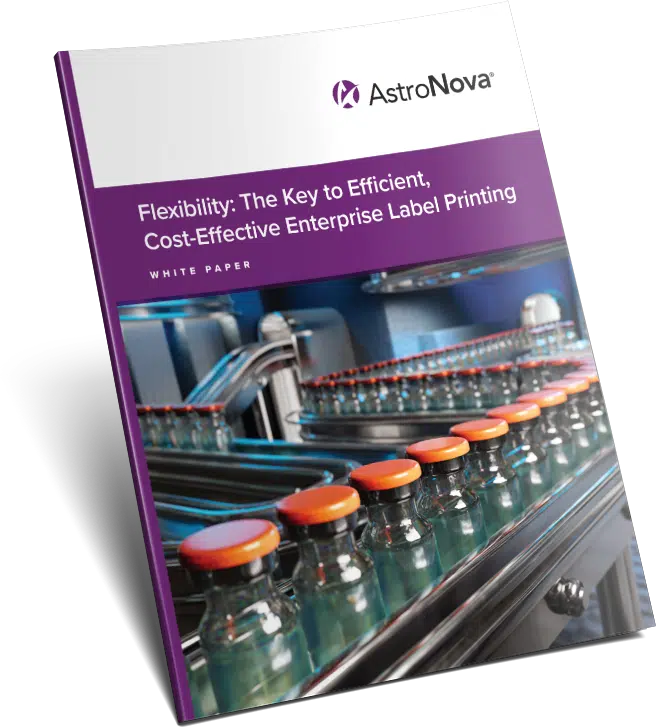
In the food and beverage industry’s ultra-competitive — and regulated — marketplace, product labeling design is critical to branding and customer communication. A poor or confusing label design can lead to misunderstandings, legal issues, company reputation damage, and potential customer risks.
Regardless of company size, food and beverage manufacturers must recognize and take proactive measures to prevent product labeling pitfalls.
The Importance of Clarity
As consumers must be able to quickly and easily understand product label information, clarity and readability are paramount. Overcrowding a label with too much information, small or intricate fonts, poor color contrast, or overly complex language is a typical pitfall. It’s crucial to clearly display ingredients and nutritional information on food and beverage products — otherwise, customers will struggle to find essential details. Frustration and mistrust can follow.
Honest Tea faced consumer backlash when critics argued its products contained more sugar than it promoted. The complaint focused on its labels, emphasizing the product’s organic and healthy aspects but downplayed the sugar content.
All critical product information must be easily accessible and prominently displayed. Minimizing or omitting details that consumers may consider key can be costly.
Legal Compliance
Legal compliance in label design is non-negotiable. While regulations vary by region and industry, most include accurate ingredient lists, proper allergy warnings, and truthful marketing claims. Non-compliance can result in legal issues, hefty fines, and product recalls—any of which can severely damage a brand’s reputation.
In 2013, Frito-Lay was sued for misleading consumers by labeling some of its snacks as “all-natural” despite containing genetically modified ingredients. After five years of litigation and negative publicity, Frito-Lay changed its labels.
Keep current on all labeling regulations and ensure all marketing and promotional claims are substantiated and verifiable.
Consistent Branding
Consistent branding across all products builds brand recognition and trust. In contrast, inconsistent label branding can confuse customers and weaken brand identity. While the prospect may seem appealing, redesigning labels too frequently or using vastly different product designs within the same line can prove self-destructive.
Tropicana significantly redesigned its label redesign in 2009, eliminating many familiar brand elements. The new design, intended to be modern and fresh, confused customers. Sales fell 20% (about $30 million) within two months. Within just a few months, Tropicana reverted to the original design.
Do not underestimate the strategic benefits of strong product label visuals and brand consistency while being mindful of the impact that may result from drastic changes.
Cultural Sensitivity
Cultural sensitivity is a crucial aspect of label design. Symbols, colors, and acceptable terms in one culture may be offensive or confusing in another. Brands must consider the cultural context of their target markets and their communities to avoid unintentional misunderstandings and backlash.
One of the most famous fails involved PepsiCo when it launched its “Come Alive with the Pepsi Generation” in China. Unfortunately, when implemented locally, the slogan translated as “Pepsi brings your ancestors back from the dead.”
A global understanding and respect for cultural nuances are critical. Conduct thorough market research and localization outreach efforts to ensure that product labels (and marketing campaigns) are sensitive to and resonate positively with all target and community audiences.
Further Effective Strategies for Success
Avoid brand-damaging issues in product label design with these additional strategies:
- Stay informed about the latest regulations in all affected markets. This includes understanding local requirements for ingredient lists, nutritional information, and health claims.
- Implement rigorous review processes involving legal, regulatory, and quality assurance teams to scrutinize labels before printing.
- Use compliance software that tracks regulatory changes and helps ensure that labels meet all relevant requirements.
- Provide ongoing training for label design and production employees to ensure they understand and can apply regulatory requirements.
- Conduct regular audits of labeling processes and products to identify and address any compliance issues promptly.
- Implement in-house label printing as a strategic, quality control, and economical means to provide further control over product label integrity, accuracy, and flexibility. While eliminating third-party supplier dependence, delays, and errors, in-house product label printing offers a second opportunity to ensure that each label meets brand, marketing, and legal quality standards and, if needed, immediately implement critical changes before distribution.
The Bottom Line
For food and beverage manufacturers and marketers, effective product label design is essential for clear communication, legal compliance, brand consistency, readability, and cultural sensitivity. Excellence in label design is not just about avoiding legal penalties; it’s about building and reinforcing consumer trust and maintaining a brand’s reputation. Furthermore, by printing product labels in-house, food and beverage manufacturers and markets can maintain greater control over the labeling process, ensuring integrity and accuracy in every label produced.




